Last Chance to Catch NYC's Holiday Notalgia Train
We met the voices of the NYC subway on our nostalgia ride this weekend!



Skyscrapers aren’t the only reason why Los Angeles is often substituted in films for New York City (think: Batman or the TV show Castle). It’s the juxtaposition Downtown of Art Deco buildings with their sleek modern counterparts that make it work (of course, the substitution is still pretty obvious to urban planners due to the width of LA’s avenues).
On a trip to Los Angeles, I took the Art Deco tour led by architect Kate Gillespie, AICD, with the American Planning Association conference, and fittingly I was actually staying in one of the destinations: the Biltmore Hotel. I’ll be able to show you what I think is the most unique part of this hotel–the gym.
Art Deco as a term wasn’t coined until 1968 and was previously known as two distinct styles: Style Moderne and Streamline Moderne.
The tour began at the turquoise Eastern Columbia Building, an example of Style Moderne, with terra cotta finish and a ziggurat or stacked pyramid shape. Once the headquarters of the Eastern Outfitting Company and the Columbia Outfitting Company, it has been converted into condos, one of which is owned by Johnny Depp. The building is a beautiful gold, blue and turquoise terra cotta, with the geometric patterns helping to define the style.

Dotting the sparsely occupied South Broadway are old theaters, including the LA Theater and the Orpheum Theatre where I caught a screening of the 1974 Jack Nicholson classic, Chinatown.
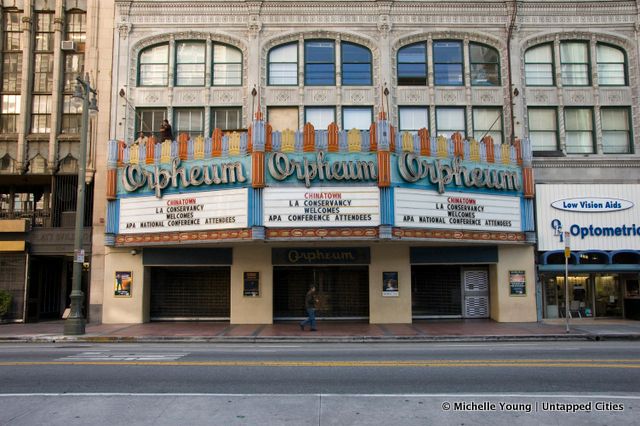
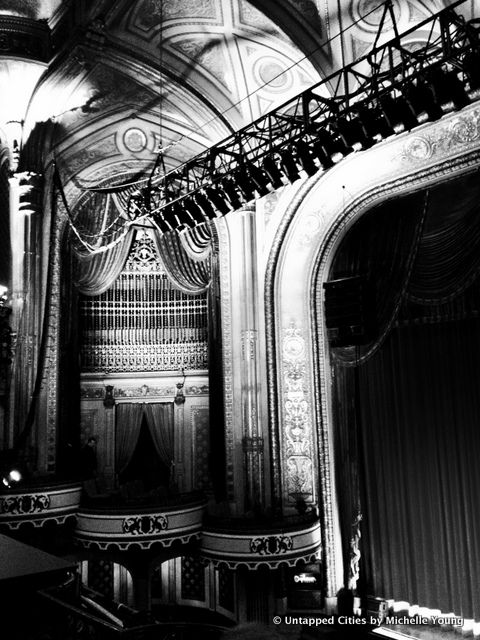
In the Ninth and Broadway Building, designed by the same architect as the Eastern Columbia Building, remnants of WPA era murals and art-deco US Mail slots still remain.

In the Cicada Restaurant of the Oviatt Buliding on S. Olive Street, a scene from the Oscar winning film The Artist was shot in the grand restaurant. Equally opulent are the front entrance of the restaurant and the René Lalique designed glass elevators serving the clothiers Alexander and Oviatt.

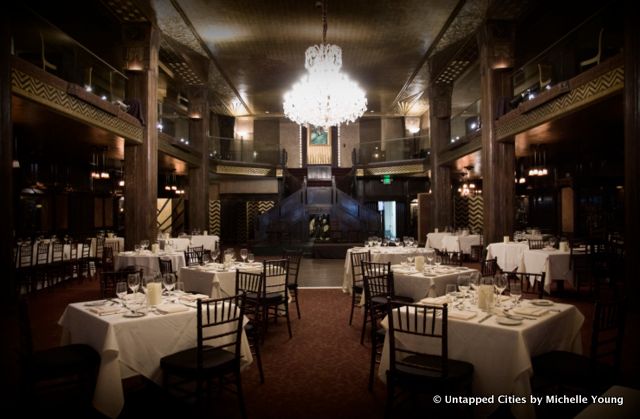
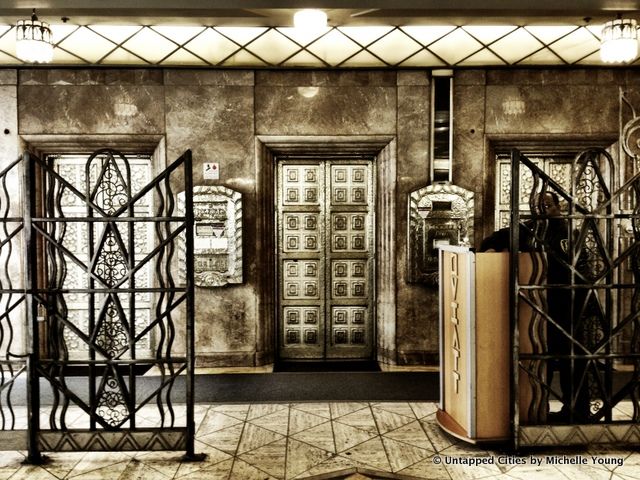
At the Biltmore Hotel (now the Millenium Biltmore), host to the original Oscar ceremonies, no bit of opulence was left out.
From the coffered ceilings, gilded entranceway and grand staircase of the hotel’s Rendezvous Court:

to the grand corridor of the lobby, often used in film and television shows:
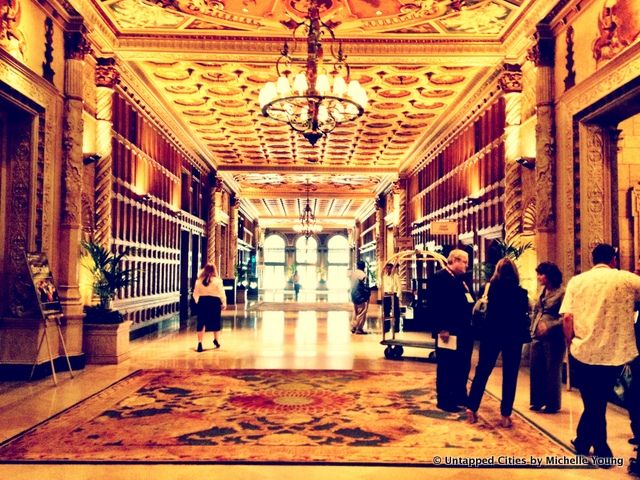
to my favorite place, the ornate terra cotta pool and health club:

you can just feel the echoes of grandeur of a bygone gilded age in America. One can only imagine the parties that have taken place in this place.
The Sun Realty Building (now the los Angeles Jewelry Center) on South Hill Street is clad in blue-green terra cotta, with setbacks to allow for more corner offices.

There are also many art deco buildings in the Streamline Moderne style, also known as WPA Moderne or Classical Moderne, many which surround Pershing Square. Particularly notable is the Richard Riordan Central Library and the WPA era murals in the lobby of the Southern California Edison Company Building.
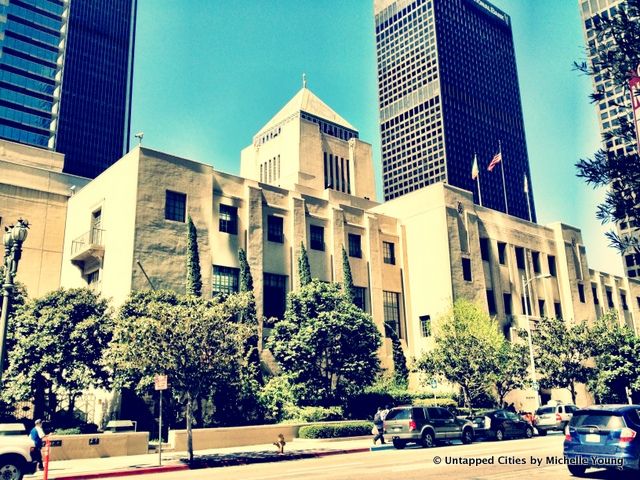
For a complete walking tour, here is the list of buildings in order in which to visit:
1. Eastern Columbia Building 849 S. Broadway
2. Ninth and Broadway Building 850 S. Broadway
3. Garfield Building 403 W. 8th Street
4. Harris & Frank Building 635 S. Hill Street
5. Sun Reality Building (Los Angeles Jewelry Center) 629 S. Hill Street
6. William Fox Building 608 S. Hill Street
7. Oviatt Building 617 Olive Street
8. Pacific Mutual Life Insurance Building 530 W. 6th Street
9. Richard Riordan Central Library 630 W 5th Street
10. Southern California Edison Company Building 601 W. 5th Street
11. Title Guarantee & Trust Building 411 W 5th Street
Get in touch with the author @untappedmich.
Subscribe to our newsletter